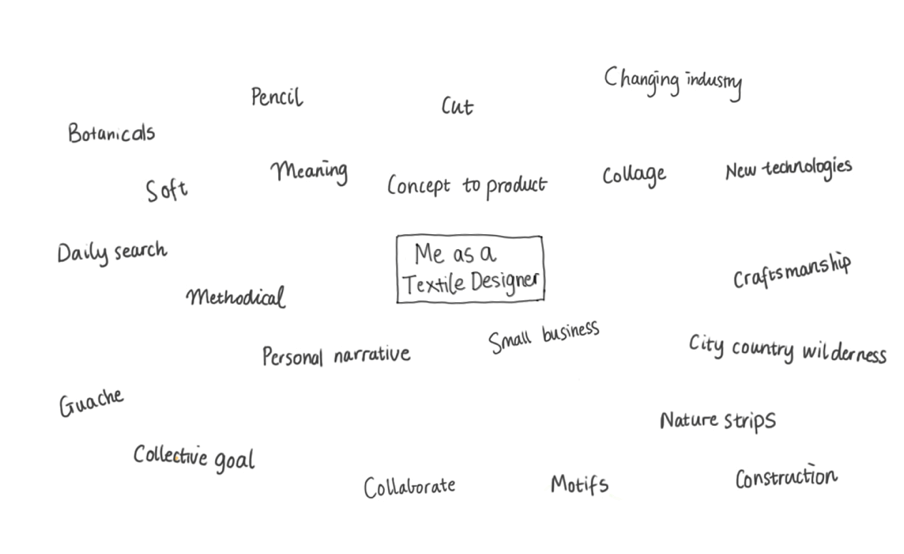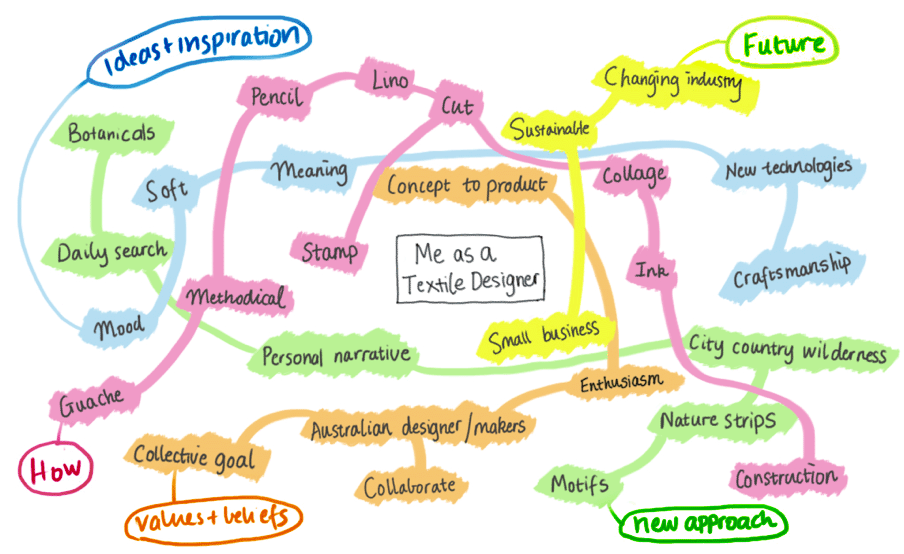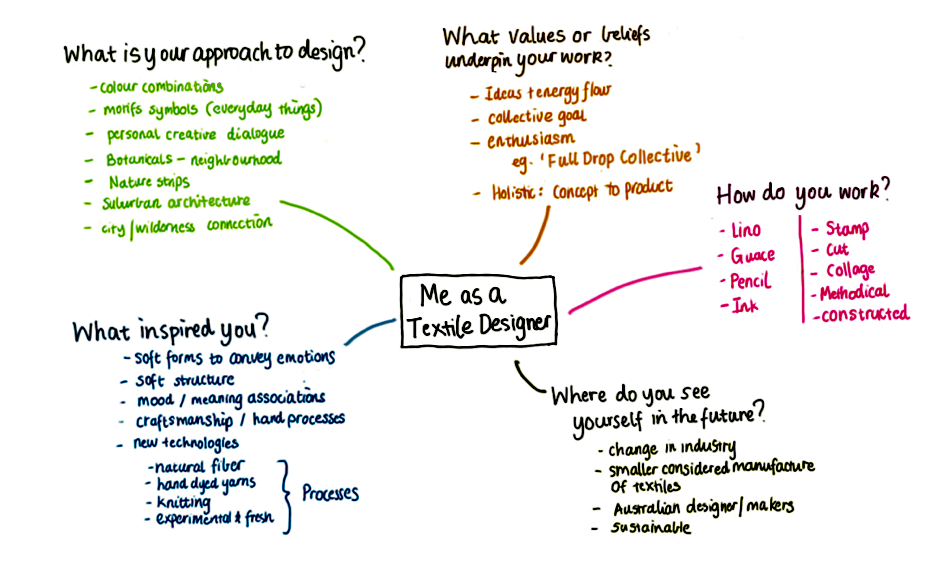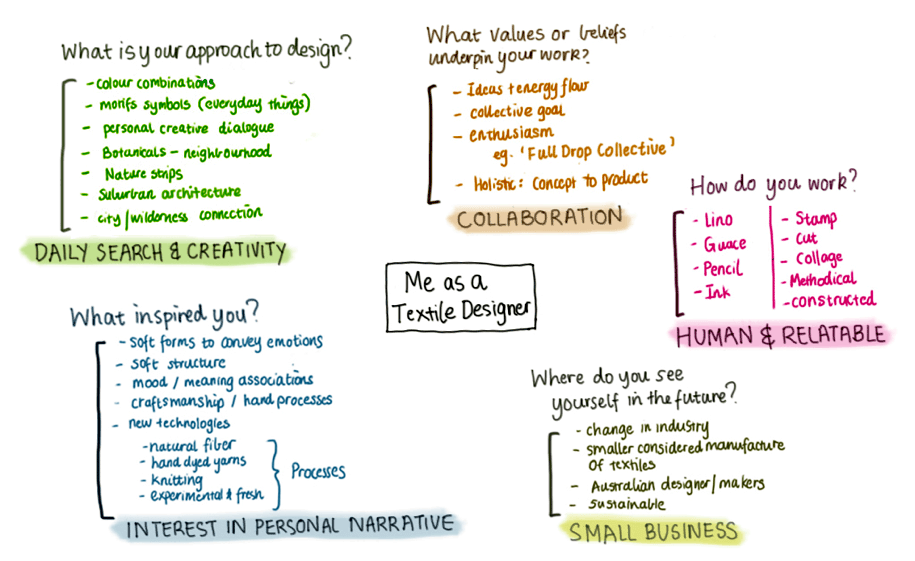Artist statement - mind mapping
If you don’t know how to start writing your artist statement, mind mapping words and ideas that relate to your creative practice is a good way to visualise concepts and create relationships between them.
Mind mapping activity
This activity is best done on paper, however, if you have a mobile device with a drawing app, you can create a digital version in the same way.
For your artist statement mind map, get your creative work together and look at it as a whole before you start. This can help you to identify key themes and the development path of your practice.
Read other artist statements (see Artist statement - examples), as these can help you to think about tone and vocabulary for your own writing.
Think about the following topics and how they relate to your creative work.
- Audience/purpose – who are you writing for? What is the purpose of the statement?
- What: Think of words that describe the format of your creative work, materials used, ideas and themes explored.
- How: Think of words that describe methods, process, and techniques you use in your creative practice.
- Why: What is the reason for your creative practice? Why is it important to you and your community?
- Context: What is your place in a continuum of creative practice? What are your influences and where do your ideas come from? Think of words or phrases that describe where you are in the world and how this affects your work.
Materials
Paper and coloured pens/pencils or any digital drawing application on computer or mobile device.
View Artist statement - writing tutorial for more information related to this process.
Visit Mind mapping in Learning Lab: Study Skills if you need more information about how to create a mind map.




